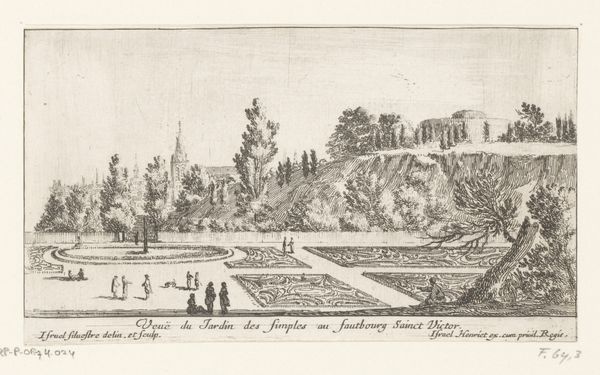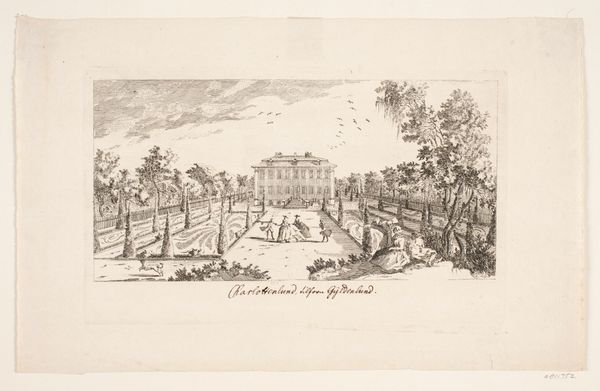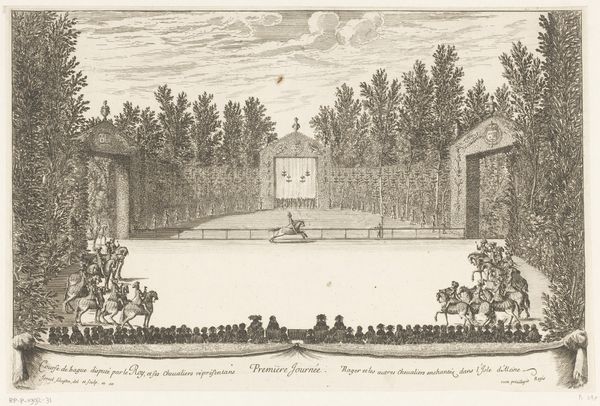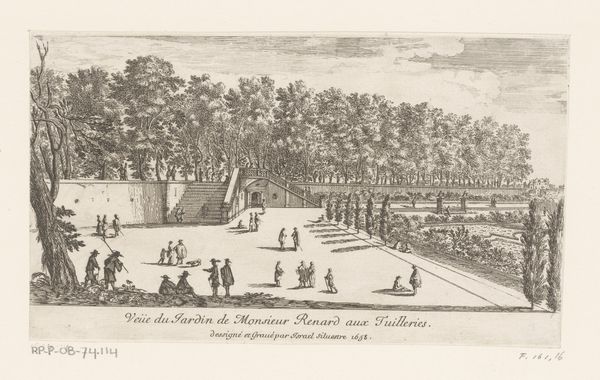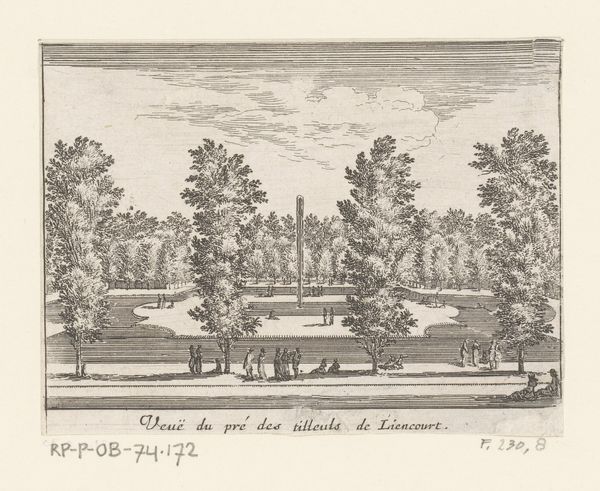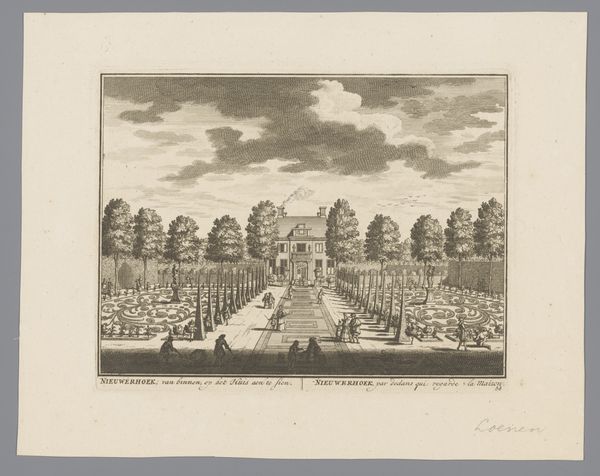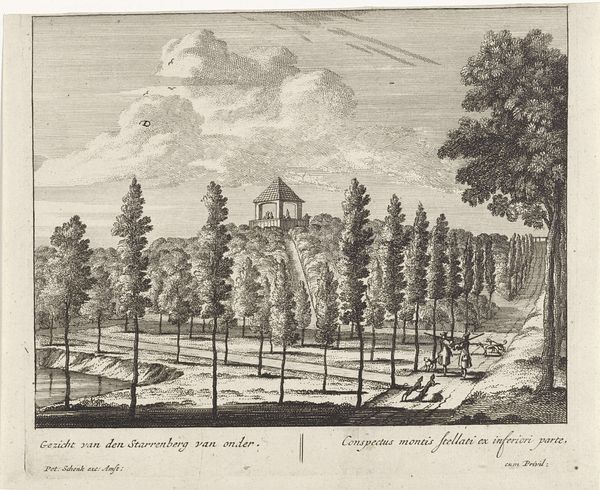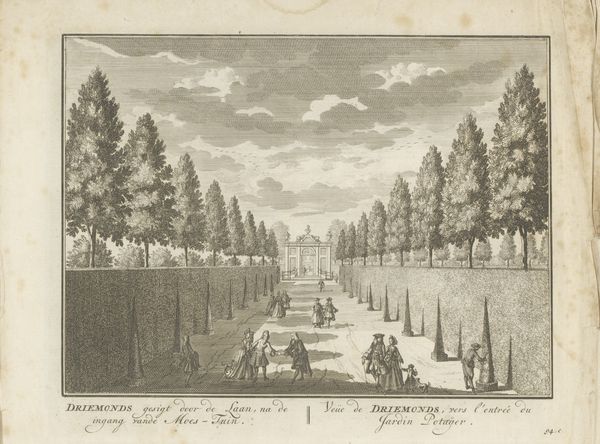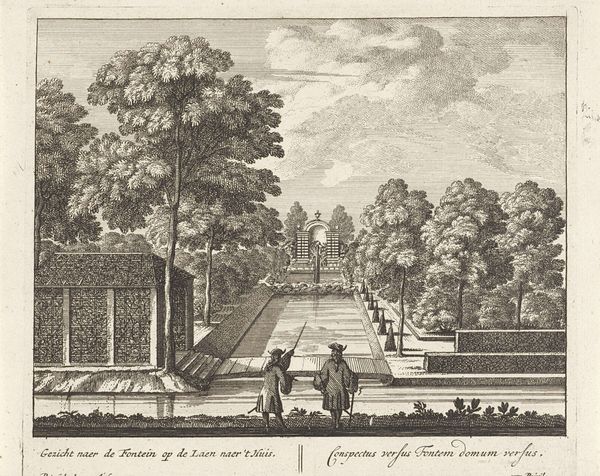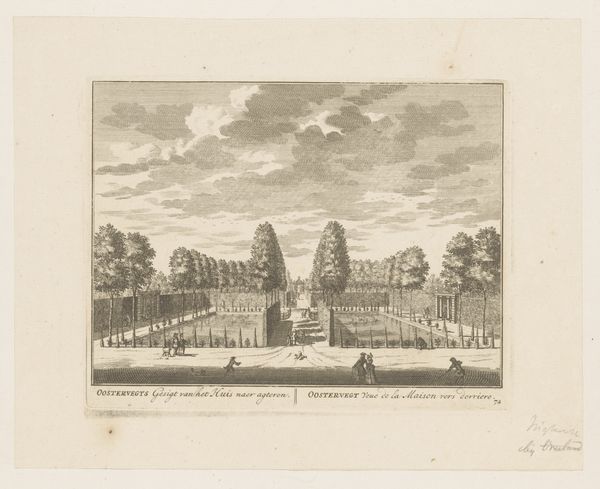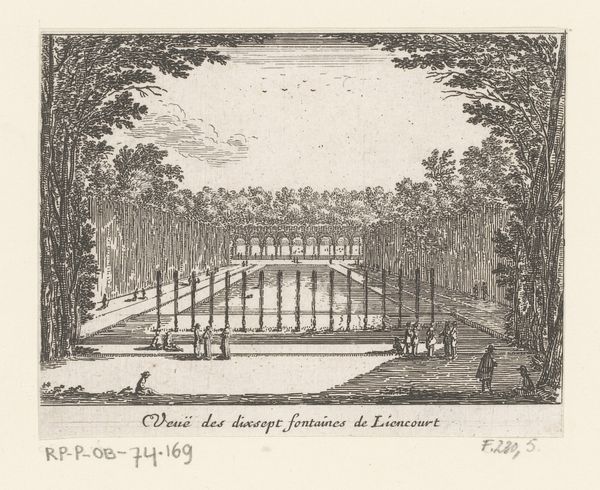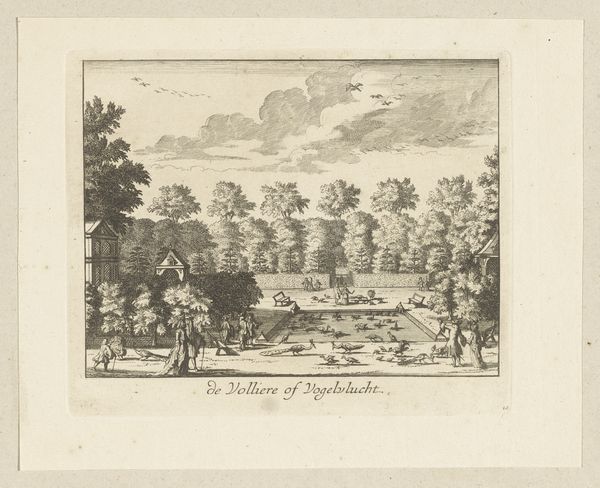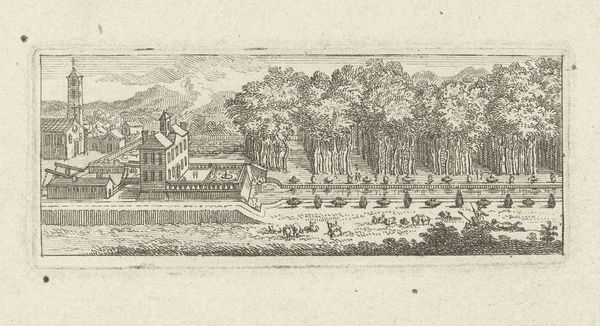
print, engraving
baroque
landscape
perspective
line
cityscape
engraving
Dimensions: height 100 mm, width 166 mm
Copyright: Rijks Museum: Open Domain
Curator: Gazing at this image, I immediately sense a kind of playful melancholy, if that makes any sense. The crisp lines give it a detached feel, but the subject… it's got character! Editor: I think I see what you mean. What we have here is "View of the Grotto of Rueil," a 1652 engraving by Israel Silvestre, currently housed in the Rijksmuseum. This baroque piece uses clean, elegant lines, characteristic of the era, to depict an almost utopian vision of a designed landscape. Look at the interplay of lines in the gardens, leading to that central structure—it emphasizes the human effort put in organizing that bit of nature! Curator: Organized… maybe even overly organized? It's pretty symmetrical, those rows on rows of fountains leading back into what almost looks like a stage set. Gives you that slight disconnect, a hint of something not quite real. Were these gardens part of an aristocratic estate? Editor: Indeed. These were the gardens of Cardinal Richelieu’s Château at Rueil. It showcases the formal gardens that became status symbols among the elite, requiring significant investment of labor to maintain that perfect perspective. Silvestre's engraving emphasizes that by reducing all its parts into distinct, neatly arranged strokes. Curator: The detail! That meticulous cross-hatching gives it a certain texture. I also notice a few people walking amongst the perfectly lined fountains… they almost seem lost, overwhelmed by this rigid structure. Are they props, part of this scene? Or maybe visitors, like us? Editor: That contrast, I think, gets at something profound. Here’s this artificial landscape made possible by intense labor, displayed to project a kind of aristocratic dominance. It’s both a representation of nature and an explicit reshaping of it to reflect power dynamics. What purpose would you assign this work? Was this an instructional engraving, perhaps for a similar aristocratic estate? Curator: I get it, and it strikes me in terms of permanence versus ephemerality... While those stone lines of the hardscape suggest solidity, I’m aware that the impression is only preserved in a very fragile ink on paper medium. A reminder that these material expressions may be fleeting in the grand scheme. Editor: True. Looking closely helps one appreciate the layers here, not just of technique, but the implications of production, labor and landscape represented. Curator: So, this melancholic little scene suddenly feels richer.
Comments
No comments
Be the first to comment and join the conversation on the ultimate creative platform.

